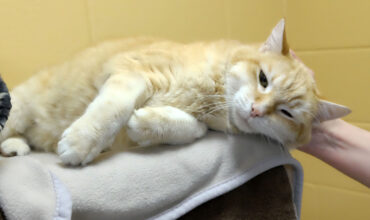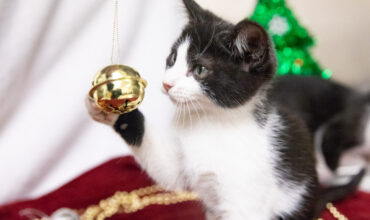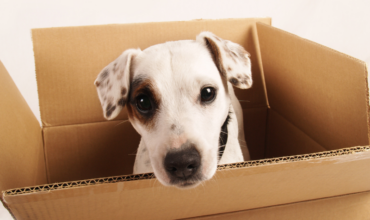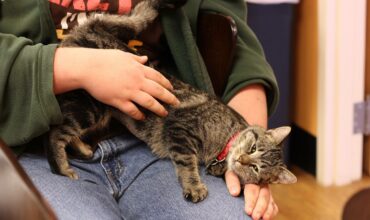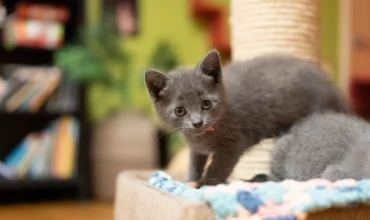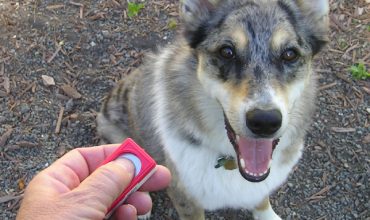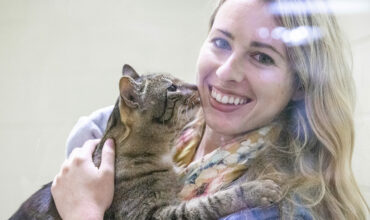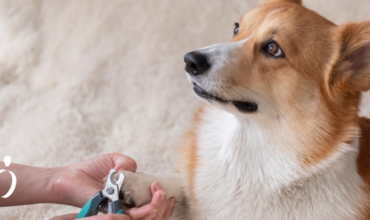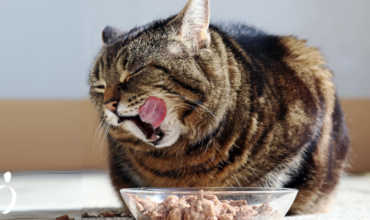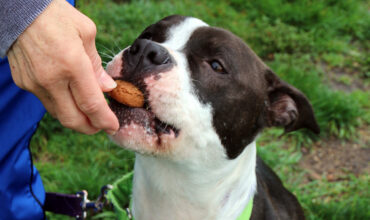As with anything in our ever-changing world, we know so much more about training and working with cats now, and it’s up to us to advocate for best practices when we’re thinking about how we live with our cats. Let’s talk about “scruffing” or grabbing a cat by the nape of the neck, to move, hold, punish or control a cat. Here’s what we know: The “flexor reflex,” causing cats and kittens to go limp when picked up by their scruff, stops within the first few weeks of life. A mother cat may bite down on a kitten’s scruff and
Read More
Archives for Behavior tips
Deck the Halls, Not the Vet Bills: How to Keep Your Cat Safe for the Holidays
With the holidays coming up, there are some special considerations for the beloved felines in our families! From being away from home to having a house full of people, here are some ways we can help the cats in our lives to feel more comfortable and to be safe. Some of our favorite holiday plants are toxic for our pets or can be dangerous if ingested. Plants like poinsettias, Christmas Lilly, maryllis, mistletoe, and holly are all listed as plants that we’ll want our cats to steer clear of. If you’re planning on traveling, find someone to check in on
Read More
Moving with your dog: What to do before, during and after
According to U.S census data, the average American moves 11 times in their lifetime. When we relocate, our dogs are leaving their familiar place behind. This can be stressful, but there are things we can do to prepare and help them adjust to their new environment. Before the move: Keep your dog’s routine consistent. Be sure your pup is microchipped, wearing a collar, and the information is updated. Take them to visit the new place a few times before the official move, if possible. Encourage positive associations with the new home by giving plenty of treats and engaging in activities
Read More
Can I make my cat a lap cat?
One of the first things people ask when they’re adopting a new cat is whether or not the cat is a lap cat. The truth is that many adult cats are uncomfortable seeking out laps for a variety of reasons, but it’s important to know that we can help our feline friends feel safe enough to seek out and enjoy being close to us, even if they’ve had unpleasant experiences that have taught them otherwise. Find out what motivates your cat. Do they love Churu-style treats? Save those for when you’d like to work on some training with your cat.
Read More
The care and handling of a new kitten
With kitten season in full swing, here are some tips to help you and your newly adopted kitten be as successful as possible! If possible, adopt two kittens! The best way to burn kitten energy is to let them play with another kitten. And trust us, burning kitten energy is possibly the most important thing you’ll need to do with your new friend! Give your kitten a safe, kitten proof space at first. A bathroom or bedroom will be perfect. Make sure they have food, water, litterbox and lots of toys in their room and let them explore the home
Read More
Why you want to get a D in Dog Training
Working on basic training is a great way to bond with your dog, increase their skillset, build their confidence, and improve their quality of life as well as your own. We always use positive reinforcement to teach dogs which behaviors are appropriate, and what we want to see more of. Did you know that there’s plenty more work to be done after your dog successfully knows how to perform a basic cue like “sit”? When we start teaching a new cue, we want as few distractions as possible, so the animal can focus on the task at hand. Once they’re
Read More
How to pick the right cat for you
You’ve decided you’re ready to adopt a cat! How do you pick the right one? Here are some tips to keep in mind when looking for the best fit possible for your lifestyle. If you have an active home with lots of people or kids, look for a cat who is actively seeking attention. These kitties may be cats who adjust easily or are less concerned with lots of noise and commotion and who would likely do well in a busier home. If you have a very quiet home, or are away from home much of the day, keep in
Read More
Operation Cooperative Canine (a.k.a., getting a dog’s buy-in for basic caregiving)
Cooperative care allows your dog to be a willing participant in a necessary activity that involves handling, such as nail trims, eye drops, brushing teeth, etc. It enables them to communicate when they are stressed and need a break from handling, creates a safe environment, and makes them more comfortable with the activity. For example, when a dog is experiencing stress during a nail trim, this creates negative associations and can make nail trims more stressful and more difficult over time. Instead, we can reduce stress by giving breaks when they’re communicated and heavily rewarding with treats and praise. Giving
Read More
Cat-astrophic eating
Do you have a cat who gulps their food, sometimes so quickly that they almost immediately vomit it back up? (Also known as “scarf and barf”ing?) Or maybe you have a cat who gobbles their food and then moves on to steal more food from their feline siblings? Here are a few tips to help with a cat who eats too quickly. Invest in a variety of feeding tools. Feeding puzzles and slow feeders can help slow your cat’s eating down so that they can both digest their food, and potentially prevent them from moving on to the food resources
Read More
What’s positive reinforcement and why do we use it?
Why do we use positive reinforcement when training and working with our dogs? Positive reinforcement (also known as R+) builds trust and helps strengthen our relationship with the dogs around us. We use a mark and reward system to teach the dog when they are doing something right. This helps us effectively communicate behaviors that we want to see more from our dogs and helps them build confidence too! With R+, we mark using a clicker or a friendly “yes!” and then we reward the dog with a reinforcer like a high value treat. The dog quickly learns that the
Read More




